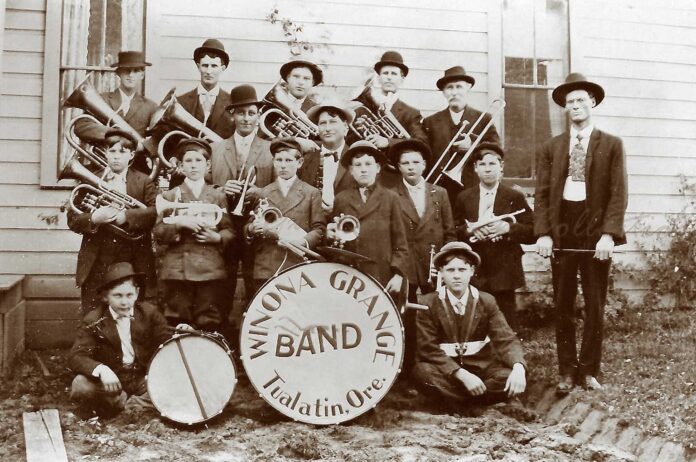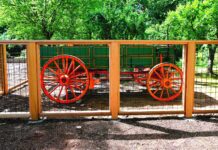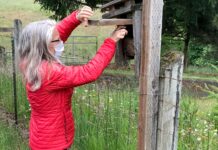Tualatin’s soil is rich and deep and generally well suited for farming due to the giant ice age floods that left behind topsoil from what is now Montana, Idaho and Washington. So it is not surprising that farmers settled the area, and although there were a few small businesses, including a sawmill or two, and a couple of general stores, farming remained the mainstay of the community until the 1-5 freeway cut through the valley in the early 1950s. Most families ate high on the hog with milk, butter and meat from the herd of dairy cows, eggs from the flock of chickens, maybe a pig or 2, and a large vegetable garden and orchard.

So when Grange organizers came to the area, they found the farmers hungry for the social graces, educational opportunities and cooperative buying power the Grange offered. The National Grange of the Patrons of Husbandry was organized in 1867 by Oliver H. Kelley, who, like Thomas Jefferson, thought that a career in agriculture, tending the soil and producing food for the nation was the highest type of employment, and that farmers and their families deserved the same cultural benefits that city folk enjoyed. Women had equal rights and could hold any office in the Grange.
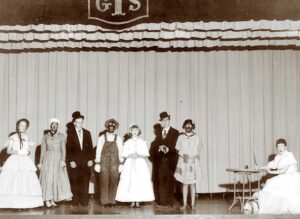
In 1895, a Grange was organized here and named Winona, after J.R.C. Thompson’s little daughter who had recently passed away. J.R.C., as he was called, owned the store in old town, and the new organization rented the upstairs for meetings and paid $5 per year rent. Music was always an important part of the Grange ritual, and in 1897, a reed organ was purchased for $48.25, which my great grandfather, William Jurgens, played. Members were encouraged to sing, play instruments, and read or memorize poetry, and shortly after 1900, a Grange band was playing gigs for 4th of July celebrations and other community events.
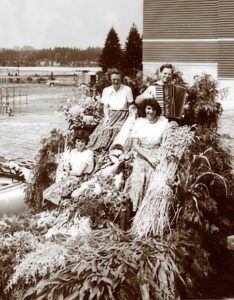
In the 1930s, the Grange met in the gymnasium of the old school, and in 1941, members raised enough money to build their own hall, which stands today on the west edge of the Tualatin Commons. The hall was the center of social activity for the community and was often filled to capacity with suppers, bazaars, plays, pinochle clubs and dances, and most everyone in town joined. In the late 1940s and early 1950s, the area’s teenagers learned to square, round and ballroom dance on the fine maple floor, and put on plays and musicals. Square and Irish dance groups now rent the hall, as well as yoga and a church.
Through the years, membership aged, and the organization nearly died out, but Winona Grange is experiencing a comeback. New, younger members have been working on many new community service projects: a Grange garden for the food pantry, a college scholarship for a high school senior, participation in the Chamber of Commerce and the Crawfish Festival, serving at the Senior Center, and now acoustic music jams.


